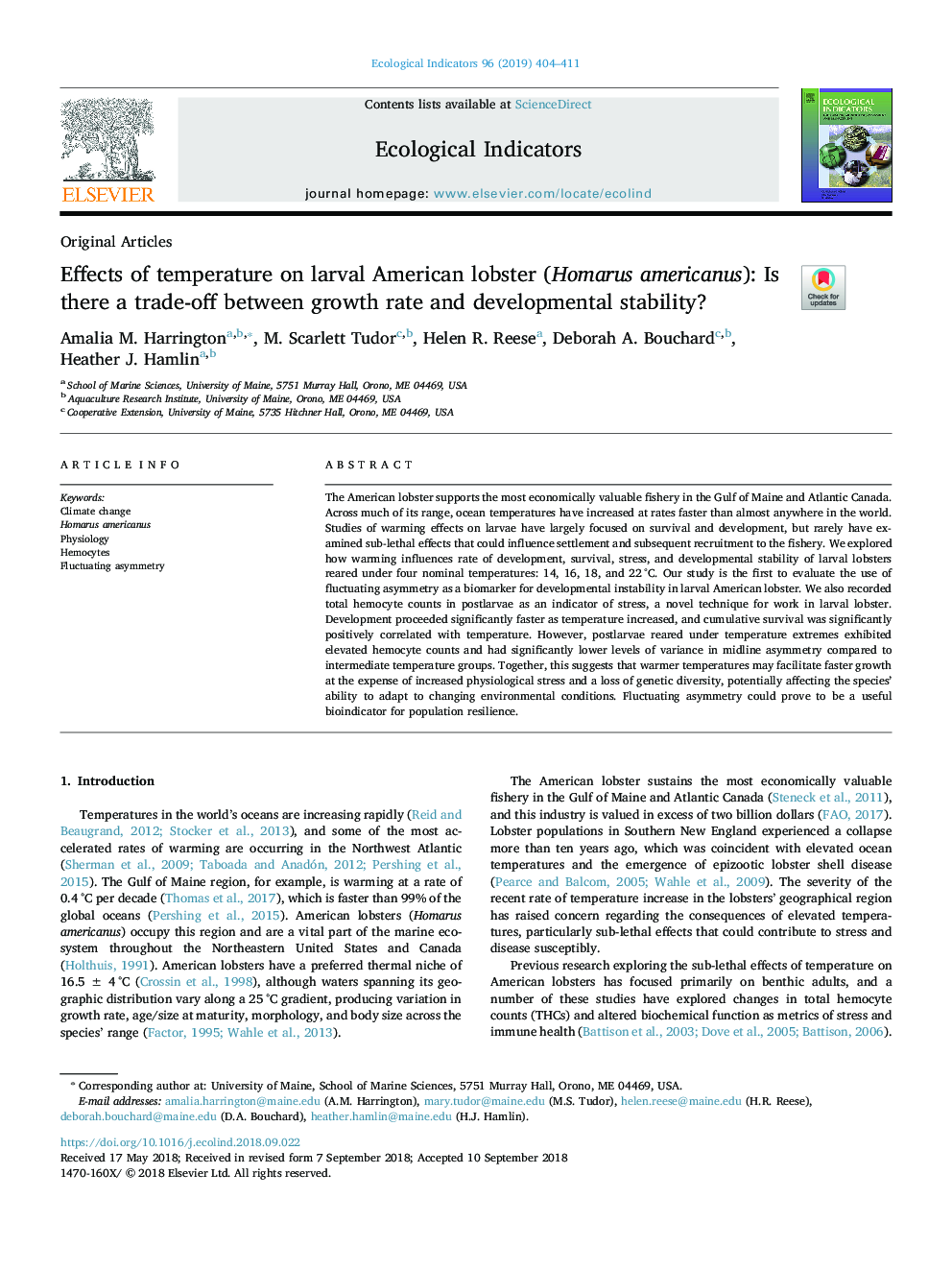| Article ID | Journal | Published Year | Pages | File Type |
|---|---|---|---|---|
| 10144262 | Ecological Indicators | 2019 | 8 Pages |
Abstract
The American lobster supports the most economically valuable fishery in the Gulf of Maine and Atlantic Canada. Across much of its range, ocean temperatures have increased at rates faster than almost anywhere in the world. Studies of warming effects on larvae have largely focused on survival and development, but rarely have examined sub-lethal effects that could influence settlement and subsequent recruitment to the fishery. We explored how warming influences rate of development, survival, stress, and developmental stability of larval lobsters reared under four nominal temperatures: 14, 16, 18, and 22â¯Â°C. Our study is the first to evaluate the use of fluctuating asymmetry as a biomarker for developmental instability in larval American lobster. We also recorded total hemocyte counts in postlarvae as an indicator of stress, a novel technique for work in larval lobster. Development proceeded significantly faster as temperature increased, and cumulative survival was significantly positively correlated with temperature. However, postlarvae reared under temperature extremes exhibited elevated hemocyte counts and had significantly lower levels of variance in midline asymmetry compared to intermediate temperature groups. Together, this suggests that warmer temperatures may facilitate faster growth at the expense of increased physiological stress and a loss of genetic diversity, potentially affecting the species' ability to adapt to changing environmental conditions. Fluctuating asymmetry could prove to be a useful bioindicator for population resilience.
Related Topics
Life Sciences
Agricultural and Biological Sciences
Ecology, Evolution, Behavior and Systematics
Authors
Amalia M. Harrington, M. Scarlett Tudor, Helen R. Reese, Deborah A. Bouchard, Heather J. Hamlin,
